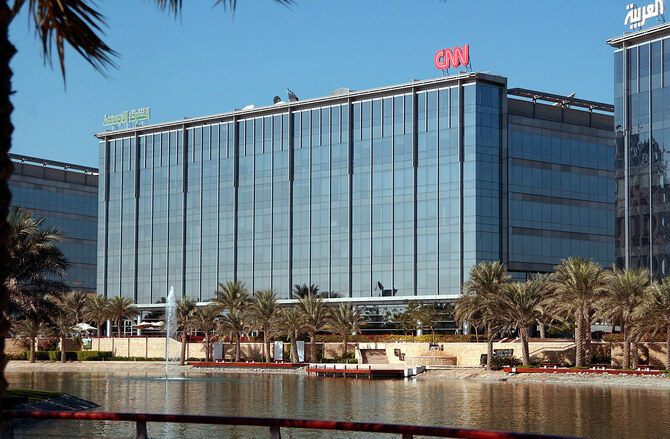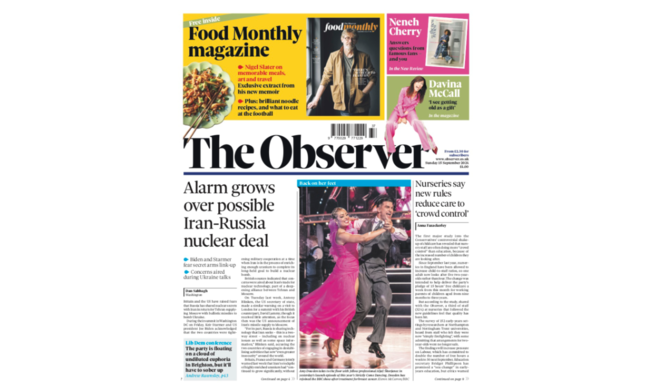
The assassination of Iranian Major General Qasem Soleimani, the head of the Islamic Revolutionary Guard Corps’ (IRGC) elite Quds Force, and Abu Mahdi al-Muhandis, an Iraqi militia commander, head of Kataib Hezbollah and de facto leader of the Popular Mobilization Forces (PMF), by a US drone strike outside Baghdad International Airport in January 2020 continues to reverberate across Iraq.
The Evolution of National Security in the UAE
READ MORE
The killings, ordered by then US President Donald Trump, have served to exacerbate the severe security challenges the government of Prime Minister Mustafa al-Kadhimi already faces. The PMF, without al-Muhandis’ leadership, is becoming increasingly splintered, threatening even more insecurity for ordinary Iraqis who are trying to recover from nearly two decades of war and terrorism.
Growing Security Challenges
Security is a prerequisite for the prosperity, welfare and economic development of any society. However, as long as Iran continues its extensive influence over Iraq and uses Iraqi territory as a venue to play out its conflict with the United States, security cannot be achieved.
After the assassinations of Soleimani and al-Muhandis, the PMF appeared to be even more aggressively pursuing Iranian Supreme Leader Ali Khamenei’s strategic goal, namely the withdrawal of all US troops from Iraq. The US Embassy, the Baghdad Green Zone and US military bases have been repeatedly targeted by PMF militias. The US responded in kind and bombed PMF positions in various parts of the country, further escalating an already fragile security situation.
Meanwhile, al-Kadhimi, viewed by his critics as catering to Washington, blamed the US for violating Iraqi sovereignty by launching unilateral operations inside the country. At the same time, he faced strenuous demands from the Americans for his government to do more to stop PMF attacks on US targets.
Embed from Getty Images
The withdrawal of foreign military forces had been approved by the Iraqi parliament just two days after the high-profile assassinations. Following the US-Iraqi strategic dialogue that launched in June 2020, the US evacuated some of its bases that have been in place since 2003, handing them over to the Iraqi army. But a final withdrawal agreed to be completed by the end of last year has stalled, and the remaining 2,500 US troops have stayed on, no longer in a combat role but rather to “advise, assist and enable” the Iraqi military.
This quasi-exit was met with a stern reaction from the PMF, who threatened to treat the US forces as aggressors if they did not withdraw completely from Iraq. “Targeting the US occupation in Iraq is a great honor, and we support the factions that target it,” was how a spokesperson for one of the PMF militias put it. Such threats underline the risk of further confrontations between the militias and the US and the potential for more insecurity for ordinary Iraqis.
The targeting of Baghdad’s airport on January 28, with at least six rockets landing on the runway and areas close to the non-military side, causing damage to parked passenger planes, underlines just how fragile the security situation remains.
The PM and the PMF
The conflicts over differences between the PMF and the government are another reason for growing insecurity in the post-assassination period. The PMF has a competitive relationship with the prime minister’s government, and this competition has only intensified over the past two years. PMF groups consider al-Kadhimi to be pro-US, seeking to reduce the influence of Shia militant groups in Iraq.
Initially, in March 2020, major Shia factions rejected his nomination, accusing him of being inordinately close to the US. The Fatah Coalition, composed of significant Shia groups close to Iran, later accepted his candidacy. Still, tensions remain as al-Kadhimi strives to strike a balance between Iran on the one hand and the US and its allies on the other.
The prime minister believes that the PMF should exit the political stage. He also believes that the PMF should be freed from party affiliation and be fully controlled by the government. This would mean that their budget would come from the federal government and not from private sources or other states. In this regard, al-Kadhimi is seeking to strengthen government control over border crossings to fight corruption and smuggling.
Embed from Getty Images
The crossings are used by militias, including those reportedly active at Diyala’s border crossing into Iran. If the government effectively controls these vital channels, financial inflows from smuggling, which strengthens the militias, will decrease in the long term while federal coffers will directly benefit.
The dispute between the PMF and the prime minister escalated in May of last year when police arrested Qasem Mosleh, the PMF commander in Anbar province, over the assassination of a prominent Iraqi activist. In response, the PMF stormed and took control of the Green Zone. Al-Kadhimi, not wanting to escalate the conflict, found no evidence against Mosleh and released him after 14 days.
In November 2021, al-Kadhimi himself was targeted in an assassination attempt following clashes between various Iraqi parties during protests against the results of the parliamentary elections. Despite its failure, an armed drone attack on the prime minister’s Baghdad residence presented a disturbing development for contemporary Iraq and was attributed to a PMF militia loyal to Iran.
Internal Struggles
The assassination of al-Muhandis had a huge impact on the PMF. He was a charismatic figure able to mediate more effectively than anyone else between various Iraqi groups, from Shia clerics in Najaf to Iraqi government politicians and Iranian officials. After his death, the militia groups in the PMF face internal division.
The PMF’s political leadership, including its chairman, Falih Al-Fayyadh, has tried to present itself as committed to the law and accepting the authority of the prime minister. In contrast, two powerful PMF factions, Kataib Hezbollah and Asaib Ahl al-Haq, have taken a hardline stance, emphasizing armed resistance against US forces. Tehran’s efforts to mediate between the leaders of the two factions and the Iraqi government have yielded few results.
Meanwhile, internal disagreements over the degree of Iranian control caused four PMF brigades to split off and form a new structure called Hashd al-Atabat, or Shrine Units. Their avowed intention is to repudiate Iranian influence while supporting the Iraqi state and the rule of law.

Make Sense of the World
Unique Insights from 2,500+ Contributors in 90+ Countries
I agree to receive emails and other content from Fair Observer. I understand that I may repeal my consent at any time. You can review our Privacy Policy and Terms of Use for further information..
Another divide in the PMF has opened up between groups such as Kataib Hezbollah on the one hand, and Badr, Asaib Ahl al-Haq and Saraya al-Salam on the other, due to poor relationship management by Kataib Hezbollah in the PMF Commission after Muhandis’ death. While it is unsurprising that a number of critical PMF functions like internal affairs and intelligence are controlled by Kataib Hezbollah given that Muhandis founded the group before assuming the PMF’s leadership, he managed to exercise control in a manner that kept other factions onboard.
But Kataib Hezbollah’s imposition, in February 2020, of another one of its commanders, Abu Fadak al Mohammadawi, to succeed al-Muhandis on the PMF Commission alienated key groups such as Badr and Asaib. Clearly, a severely factionalized and heavily armed PMF continues to pose a significant security threat in the country.
Announcing the assassinations on January 3, 2020, Donald Trump said of Soleimani that “we take comfort knowing his reign of terror is over.” Two years on from the killing of the IRGC general and the PMF boss, ordinary Iraqis beset by violence and insecurity take no such comfort.
*[This article was originally published by Arab Digest, a partner of Fair Observer.]
Source: fairobserver.com



